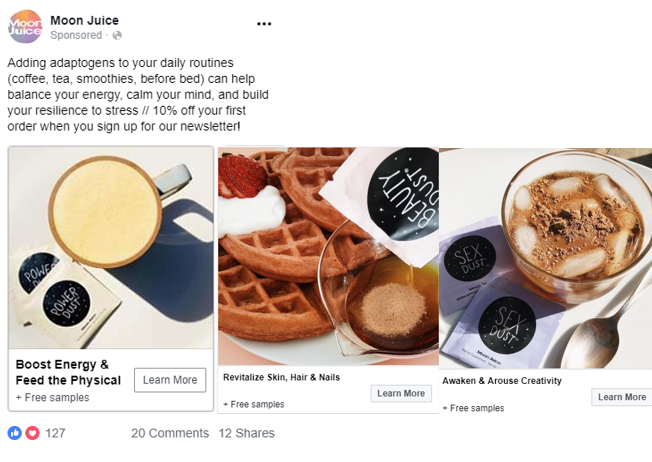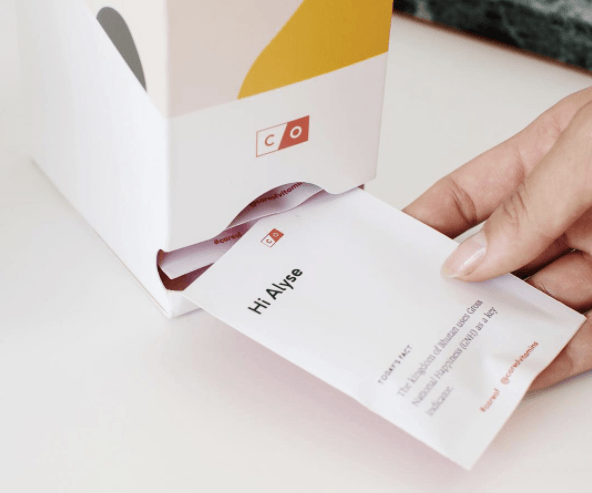10 Simple but Effective Customer Engagement Strategies


With the rise of social media and influencer marketing, today’s consumers are no longer satisfied with a one-sided conversation with brands.
Bringing your customers into conversations and making them feel like a part of your brand story and community has replaced the traditional in-your-face push model of marketing campaigns.
Enter customer engagement marketing: an area of marketing dedicated solely to involving your customers in conversations and building a stronger relationship between them and your brand.
“Nowadays, people expect brands to know who they are and what they want. Consumers expect a customized, seamless, efficient, engaging experience. If they don’t get it from one brand, they know there’s another brand who will treat them better. Be the brand who gets this right!”
— Ashley Brock, Senior Specialist, Paid Search at Elite SEM
Customer engagement marketing is a marketing initiative that focuses on creating a connection between a brand and its customers.
By telling stories and starting conversations, your brand can address customer needs and interests to make marketing interactive and valuable.
“More and more brands are testing different audience and creative strategies that aim at delivering a custom experience for all consumers,” says Brock.
“For us to engage with a consumer, we need to understand not just who that person is, but what they want. Engagement strategies can be leveraged to start and carry your conversation with new and existing customers.”
–Austin Wisner, Senior Director, Integrated Media Strategy at Elite SEM
Here are ten simple customer engagement strategies that your business can leverage to drive brand loyalty and customer satisfaction.
A contest or giveaway can be a great way to get customers talking about your product. For example, creating a giveaway on social media that offers entries in exchange for comments, shares, and tags will drive engagement and keep customers excited about your products.
“Brands should lean more towards giving their audience what they want, and less on pushing out what the brand wants,” explains Brock.
“If the consumer gets what they’re looking for, it’s not just a win for the consumer; it’s a win for the brand.”

By tagging their friends, they’re spreading the word about your products in a way that can benefit both them (if they win) and your brand awareness.
It’s no secret that user-generated content is a key piece of a successful marketing strategy in 2019. Customers want to hear from other people like them — not from a faceless company.
Solicit stories from your customers about their experiences, travels, or successes — anything even tangentially related to your product or brand — then share them with your audience on social media or other marketing channels.

Associating real personalities and shared experiences with your brand helps customers feel more invested, and social proof can be a great marketing tool.
How frequently do you solicit feedback from your customers?
Chances are, it’s not often enough. Follow up with customers after purchase to elicit feedback, then show them that you actually listened to them by improving.
For example, if several customers have the same issue with a product’s design, make sure that you let them know when you release an improved version — and publicly thank them for the feedback that helped shape the new product.

Consumers want to know that their opinions matter, so this practice encourages brand loyalty and make on-the-fence shoppers more confident in their choice.
Create a hashtag or an online forum that encourages customers to not only interact with you, but with each other.
This often takes place on brands’ social media, where customers share their experiences and connect with one other to express stories and ideas.

Creating a community around your brand can help make customers feel part of something larger than themselves and more deeply connected to your brand.
Ethical and values-based brands are poised to be an even larger retail trend in 2019.
Consumers are becoming more and more conscious of the ethos behind the businesses they buy from.
By associating your brand with ethical issue and nonprofits that your customer base cares about, you show them that you share their values (and that you’re more than just an emotionless company).
In the vein of humanizing your brand, make sure that a personality shines through your customer communications — especially on social media!
Customers don’t want to talk to a brand; they want to speak with a person. You’ve probably seen recent examples of brands being “sassy” on social media, but don’t feel pressured to take that route if that doesn’t align with your audience.
Instead, focus on being genuine in your interactions, rather than a 24/7 salesperson.
One of the reasons that content marketing has grown in popularity over the past few years is that it works.
Providing valuable content to your audience builds trust and keeps them coming back to you as an expert, not just a product.

Use content to share helpful information and educate customers on common topics in your area of expertise.
For example, beauty brands can create makeup tutorials that feature their products. This keeps the product top-of-mind without feeling too “sales-y,” while also providing information that customers value.
“Providing valuable content and information to the consumer and gives the brand an opportunity to further understand and engage with that customer,” says Wisner.
Engaging with your customers online is great, but meeting them in person can be even better.
Hosting local events in areas with a large customer (or potential customer) base can be a great way to get to know your customers face-to-face.
In-person conversations can often be more natural than online. Incentivize attendance with new product previews, freebies, and even popular speakers on topics that your customers find interesting.
It’s easy to automate including a customer’s first name in a subject line or email header, but there’s more to be done to create a truly personal experience.

Personalize customer communications on both ends — have customer emails come from real people at your company, and take the time to respond to customer inquiries individually and with a personal touch.
“Understand who your customers are and where they are is key to engagement,” explains Wisner.
“It’s important to meet them where they are and contextualize your message.”
Your customers want marketing that doesn’t feel like marketing.
Not every brand should crank out memes or attempt viral videos, but there are opportunities for every brand to connect with customers.
Provide entertaining content, conversation starters, and a community that feels true to your brand, and customers will feel as though they’re connecting with something more than just a business.
“Understand who your audience is, and who it isn’t,” says Brock.
“Craft different messages based on the audience your targeting and the message you’re trying to get across.”
